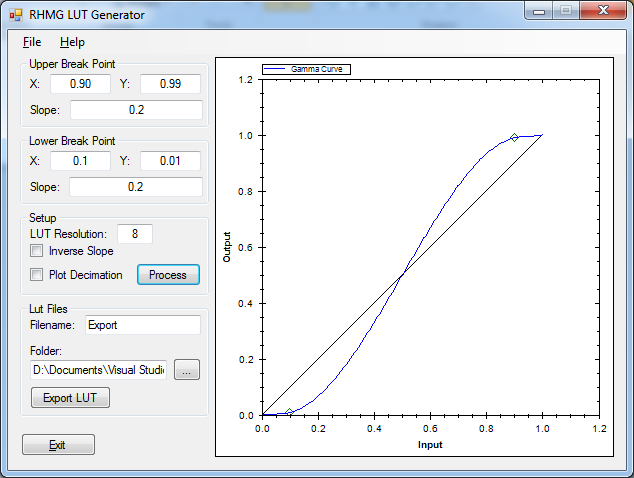
It’s a very quick way of converting between sets of values.

All a 1D LUT does is convert one value into another - you have an input value, that is looked up in the table and an output value is found. One is a 1D (one dimensional) LUT and the other is a 3D Cube LUT.Ī 1D LUT is very simple, very useful and not a problem. Lets define a few terms before we dive into what’s going on. This post will attempt to show you what a LUT does and when it doesn’t do it very well. The truth, as always, is somewhere in between. LC709 Type A brought Sony a step closer to our world.LUTs have been seen as the holy grail and the very embodiment of the devil itself. Our job is to tell stories, not sell TVs. We prefer subtlety and sophistication in our color palettes.
Lut range for lutcalc tv#
Bright saturated color may sell TV sets in retail stores, but cinematographers tend to be visually sophisticated craftspeople who find highly saturated colors garish. It’s not perfect but it’s a solid alternative to Sony’s traditional broadcast look, which is a bit dated for the digital cinema world I currently inhabit. Within six months they rolled out the LC709 Type A LUT, which attempts to somewhat emulate Alexa’s color response. To Sony’s credit they responded quickly to my demonstration. Both systems have their merits, but for an old film guy like me film-style highlights are the way to go. Sony works with video’s inherent additive color properties and allows saturation to increase with brightness until a color channel fails. Traditional video cameras continue to saturate color as exposure increases until color channels clip, at which point they focus on damage control to prevent highlights from shifting hues.Īrri emulates film, a subtractive color process where maximum color saturation is found in shadows and mid-tones.

Or, maybe I should say I showed them how Alexa desaturates color with overexposure: once a hue passes a point at or near middle gray in brightness, its saturation locks and it only gets brighter. Several years ago, at an NAB focus group, I showed Sony the difference in how Alexa saturates color with overexposure vs. Remember that when your image in LOG mode the tools works in different way. add one more color transform node: linear to timeline gamma. adjust gain (this acts same as expose/iso) add color transform node: timeline to linear One more useful trick with LOG footage is that you can mimic Exposure(ISO) RAW slider with gain slider. This way you will get a reach colors and contrast but never get a clipping and ugly video look. add color space transform node to timeline and set input: as timeline and output matched to input in your generated LUT.Īdjust image with contrast + pivot sliders in the node located before LUT. This generated LUT will compress all tonal and color information without any clipping. If final image too dull or black is too clipped you can experiment Input/Output Range:Legal/Data, but most time its ok to leave it as is. output gamut: LC709 (actually i prefer Amira709 but some time ago Alexa-X-2 and Amira709 gamuts where removed from LUTCalc for unknown reason) output gamma: Alexa-X-2, Amira709 (developed by Arri) or LC709 (developed by Sony) input gamut: rec2020 or any other wide gamut you prefer (you need this conversation because native BMDfilm input color space is missed in LUTCalc) input gamma: Cineon or BMDfilm (i prefer work in Cineon gamma) I suggest to generate your own luts in LUTCalc. It's as easy as just turning on the 709 option in FCPX when working with log footage. If you are wanting a quick video (709) look and render then my first option will be your best bet. Honestly I always cut in FCPX as log and then send back to Resolve to do my final grade. Also there is a pure LUT loader aftermarket add on, which the name escapes me right now but you could google FCPX lut loader, which will allow for luts to be loaded and adjusted with FCPX native color tools. I haven't used it but I've heard good things.ģ.

Also has color wheels similar to Resolve to manipulate the look to your liking. Color Final (FCPX add on) has the ability to load cube luts of your choosing. In the inspector column (top right windowed area with the file info) you can change the view from log to BMD 709, Arri, Sony, and I believe a few other options.Ģ. While cutting and you want to view the footage as how it will looked with a finished grade you have a few optionsġ. You can still edit in film (log) color space in FCPX.


 0 kommentar(er)
0 kommentar(er)
